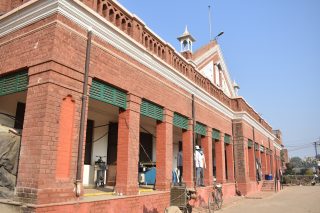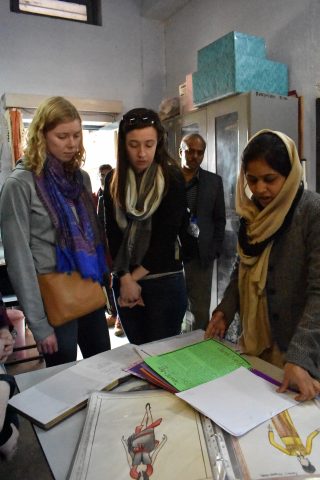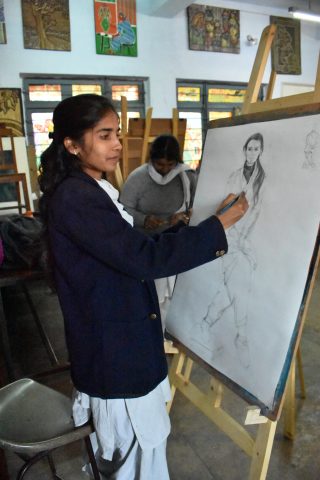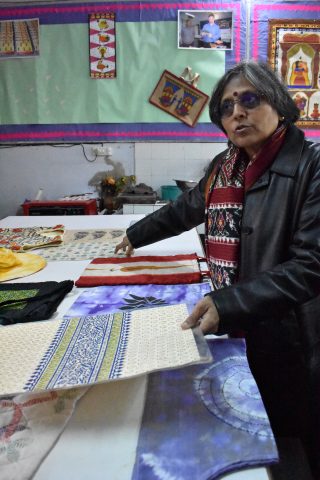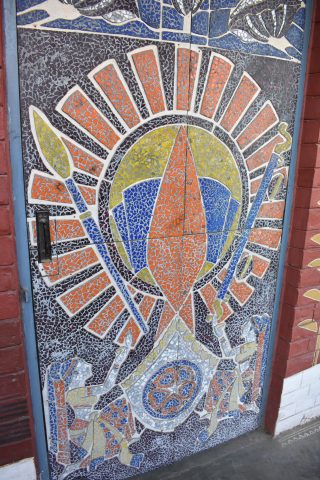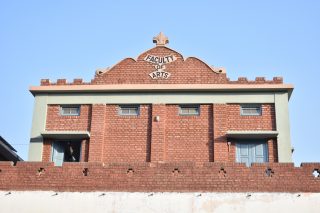To an outside observer, it may have looked questionable visiting three educational and / or research institutions lest the experiences start overlapping and become monotonous. However, these academic visits were among my favorite parts of my study abroad experience in India as each location offered different facilities, different research subjects, and most interestingly, different approaches to common problems. At the Dayalbagh Educational Institute in Agra, I had the chance to witness multiple academic fields and to visit with multiple faculty about current work in manners that demonstrated the values that the institution was striving to instill in its students.
Dayalbagh Educational Institute (DEI) was the last of our three visits and by far the most diverse. Besides the first few days with jet lag, this day’s itinerary exhausted me the most as our group trekked back and forth between various parts of the campus. In the morning, we began with a visit to the dairy farming facilities, and I learned about the distribution of the herd of cattle between milk producers and grazers, witnessed the more traditional practices for improving weight gain and milk production (including playing soothing music over the grounds and approaching each of the cows by name), and taste-tested some of the products. Later, we also had the chance to present our findings on some of the main differences between the United States and India to the current graduate and PhD students working in the botany department who then presented about their current research. Much later in the afternoon, we encountered departments with projects including an online wiring testing source, Alzheimer’s treatments, and constructions of 3D printers.
As a biochemistry major, it was admittedly shocking that the arts department left the one of the biggest impressions on me out of the entire campus. The Faculty of Arts was situated towards the back side of campus, and two stories of dry, red brick surrounded a courtyard full of many lounging and conversing students as we entered. The dean of the campus dedicated much of the afternoon to eagerly leading us through each of the specialties in this department which involved walking around the inner side of the building and climbing up and down the stairs.
In each department, I loved how each of the faculty described not only what sorts of assignments the arts students commonly handled but also how these assignments either tackled problems in society or incorporated pieces of traditional Indian culture. For instance, in the fashion design department, the teacher explained that some of the students ventured into creating stuffed animals and small toys in addition to clothing in order to expand their artistic skills, recycle products like stuffing and textiles, and presumably create cheaper toys for youth.
My absolute favorite part of my experience here was witnessing the persistence and integration of traditional Indian culture within the modern education. Among the drawing department, there was a specific class for miniature painting, a form of classic Indian painting characterized by fine brushstrokes and often times ornate colors. Even in the short time standing amid the students and the walls lined with these pictures, I was impressed by the talent and detail evident in each piece. Another class focused on murals and mosaics, and I loved that the students utilized all of the doors and some of the hallways for their canvases.
Finally, we were fortunate enough to be able to hear a short music recital delivered by three students and some accompanying professors. Even before we walked into the makeshift performance room, I had heard some girls practicing a modern choir arrangement of “Mary, Did You Know?” in another room. However, after we were seated and settled, our group was privy to a small concert with traditional Indian instruments including the tabla and the sitar. It was incredible to experience music with unfamiliar beats and harmonies, and I found it incredible that this art not only has persisted for ages but is still being taught and performed passionately today.
Though the day was long, the experience at DEI left me feeling full. I came to India wanting to learn more about the culture, and the institute allowed me to observe components of traditional and modern culture at one site. In particular, the arts facilities created a new appreciation for some styles of art that I had seen before but had never understood their history or techniques. After leaving DEI, I realized that I can only hope all educational institutions strive to instill this love for both traditional and modern disciplines.
https://drive.google.com/file/d/15RY9NZl3GtKUUd5zrgqT3KQZ56Iwmt-O/view?usp=sharing
